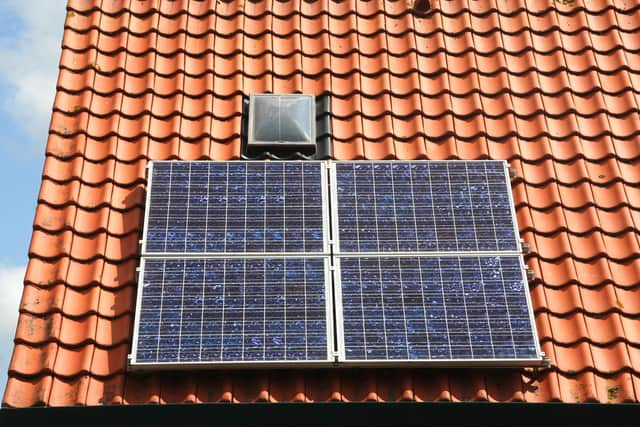Strides in solar power technology shows us the way forward - Andy Brown
In the early days of that technology it is usually necessary for the government to make clear thinking decisions about what to encourage businesses to invest in and to provide significant incentives to adopt fresh ways of doing things.
The first solar panels were the product of costly research projects coming out of cutting edge technology departments in well-equipped universities.
Advertisement
Hide AdAdvertisement
Hide AdWhen they began to be deployed in the real world the people and the organisations which installed them needed financial support to get started on schemes which were often driven more by idealism than practical economics.


Yet if a technology is ever going to prove to be really successful it usually needs to reach a point where it becomes economically attractive without government subsidies.
There comes a moment of transition when the new way of doing things is cheaper and more reliable than the outdated approach. When that happens history shows that there can be a sudden and rapid shift that causes radical change throughout society.
The first time I saw a computer I walked into it. There was a room full of transistors, a great deal of heat and some cards with holes punched into them which gave it instructions. It was just about capable of calculating the wage payments for a large organisation. Now most of us have something massively more capable sitting in our pockets.
Advertisement
Hide AdAdvertisement
Hide AdThe same transition is starting to happen with solar power. Putting panels on a roof, backing them up with battery storage and installing an inverter now genuinely pays back the initial investment cost in a very reasonable period of time.
In a new home any extra cost will put up the mortgage payments by far less than it will cut the heating, lighting and cooking bills. A hard headed business calculation also now comes out positively on most older properties.
The benefits are proving so attractive that a boom is underway and any competent company working on installing the panels on older buildings is being rushed off their feet with orders.
After a winter of heavy energy bills and with fires burning up southern Europe, Canada and Siberia a lot of people are wanting to provide themselves with a cheap supply of power that will work whatever happens to gas prices as a result of Vladimir Putin’s war.
Advertisement
Hide AdAdvertisement
Hide AdBecause of the sophistication of those computers that we no longer have to walk inside, the supply from solar is also proving remarkably reliable even in our cloudy, wet and cold winters. It is easy to programme batteries to draw any shortage of power from the grid at 2.30 in the morning when it is cheap because wind farms are pumping out more power than is used nationally and then to supply it back at 5.30 at night when the grid is under pressure.
That makes utilisation of solar panels very attractive not just for homeowners but for big businesses, farmers, schools, hospitals and offices. Almost anyone with a large roof can now make money from investing in equipment that will cut running costs and that drives down inflation.
Yet one thing is badly holding back the transition. Too many organisations that install large solar arrays can’t get connected to the grid without long delays.
The big energy companies which ought to be receiving the surplus power that is produced by large schemes are very slow to link up new schemes because they have failed to invest rapidly enough in either the equipment or the training that is needed. Private homes can usually get connected to the national grid quickly and easily but businesses that are trying to do the right thing and innovate to become more efficient are being told that they must wait for very long times before they will get connected.
Advertisement
Hide AdAdvertisement
Hide AdNorthern Powergrid, for example, has made some organisations wait for over a year for their solar panels to be linked up properly. That isn’t always their fault. They are dependent on the electricity transmission network run by the National Grid. Another privatised monopoly that customers have no choice other than to use.
This is producing some very strange and unfortunate situations which are seriously holding back the modernisation and the competitiveness of our businesses and our public enterprises.
In Craven there is a very nice swimming pool, which a far sighted Council succeeded in getting equipped with solar panels before this winter’s fuel price crisis hit. Those panels can produce a great deal of power and save the public a fortune when the bills come in for heating up all that water. Yet they have sat unconnected to the grid for over a year.
Andy Brown is the North Yorkshire Councillor for Aire Valley.